FAQs
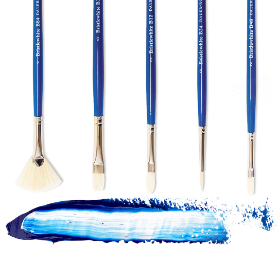
We’ve collated some of the most frequently asked questions to help you find the answers that you are looking for.
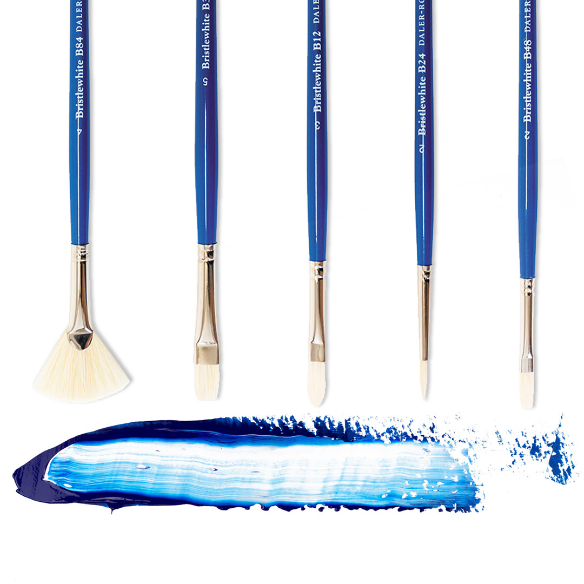
Products
The environmental benefits of water-based paints compared to solvent-based alternatives are well known and understood. The absence of Volatile Organic Carbons (VOCs), toxic and or flammable solvents are the clear benefits of water-based paints. These advantages of water-based paints are well known by the end consumer; however, the disadvantages are not so transparent.
The fundamental weakness of water-based paint is that it provides a hospitable environment for microbiological growth and without proper formulation, water-based paints would suffer from fouling within a relatively short period of time. Such fouling, if allowed to occur, would reduce the product life expectancy, allow exposure of potentially harmful microbiological organisms to our consumers and lead to higher waste and ultimately negative environmental costs. Enhancing product lifecycle is an important contributor to the overall sustainability of a product with any form of in-built or natural obsolescence increasing waste and lowering the sustainability scoring of a product.
To maximize the benefits of water-based paints and to improve product lifecycle, Daler-Rowney, like all manufacturers of fine art and craft paints, makes use of preservative agents in its formulations. These preservative agents are designed as in-can protectors against microbiological harm, used in extremely small quantities (50-100 parts per million). The preservative agents used by Daler-Rowney are all approved for such use by the relevant competent authorities.
Preservative agents have always been used within artist & craft paint formulations, however, in recent years EU legislation has changed and it is now a requirement for manufacturers to list the presence of certain preservative agents on product labels when the additive is used above a certain concentration in the final product. This new legislation is primarily driven by the fact that these perseverative agents can lead to allergic reactions in a very small number of people, and it is only fair and reasonable to identify this small risk to all consumers at the point of purchase.
All risks associated with all products placed on the market by Daler-Rowney are clearly identified on the product label and the Safety Data Sheet (SDS) which are available on our company website. We are always more than happy to provide any further clarifications on such matters when and if they are required.
Yes, we do sell colour wheels, for more information visit the product page.
To find your nearest store or online retailer, please visit our store locator.
Colour charts are featured on the Download tab on the product pages.
Our latest Safety Datasheets are on the product pages in the Download tab. These are the most up-to-date data sheets.
We have different ranges for different artistic expertise:
The Simply collection is for beginner artists and hobbyists
The Graduate collection is aimed at students.
The Aquafine, Georgia, System3 and FW collections are aimed at professional artists.
The Artists' and Designer collections are our top-of-the-line artist ranges.
Our products, when stored correctly have very long shelf lives - on average around 5-15 years. If you have any concerns about a product, please do contact us.
Daler-Rowney products are not EN71 compliant as they are aimed at adults.
For enquiries on products from other brands in the FILA Group, please contact the brand directly with the product in question.
The tubes when cleaned are recyclable. The most environmentally friendly way of cleaning would be to put the washings into a sand bin. This prevents any washings from going to the sewer.
The hazardous symbols are attributed to substances that are hazardous to the environment - these are standard symbols on artist paints.
The most standard symbol on art products is a dead tree and a dead fish symbol. This symbol means the product is toxic to marine life with long-lasting effects. Our recommendation when cleaning your products is to put the washings into a sand bin rather than down the sink.
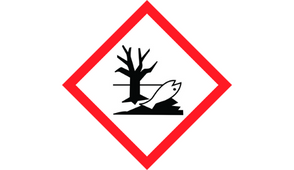
We recommend taking a look at our safety data sheets for your chosen paint as these include safety precautions and any reactions which could happen.
The datasheets can be found on our website, by clicking the product and then the downloads tab.
We have a variety of brushes depending on the medium used and the style of painting:
- Flat – The flat can apply broad strokes or a fine line, when used on the chisel edge.
- Filbert – Ideal for base-coating round or curved areas, applying washes and painting flower strokes.
- Angle shader – Brush that allows the artist to get into tight areas with precision, which is perfect for shading and highlighting.
- Wash – Great for applying washes or floating and blocking in large areas of colour.
- Fan – Staple choice for landscapes and foliage, allowing paint to be applied in multiple directions in a single stroke.
- Mop – Recommended for softening and blending, as well as varnishing and decoupage because it shows minimal brush strokes.
- Sword – Works well for painting long grasses, flower stems, strokes of fur, leaves and flowing lines.
- Round – Classic painting brush used for everything from flora and still lifes to portraits and landscapes.
- Spotter – A round brush with shorter, tighter filament, ideal for any accurate detailer.
- Liner – Brushes with very fine points, good for delicate work such as outlines, small details, lettering and long continuous lines.
Why not take a look at our handy guide on choosing the best paintbrush for your technique, click here.
The filament of a brush can be suitable for more than one technique. This table indicates the prime technique for each filament type, but also provides a guide of suitability for the others.
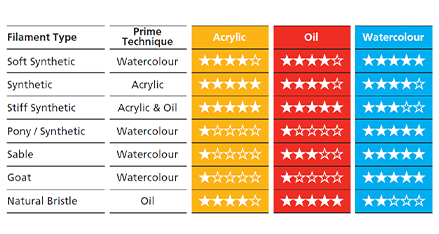
To care for your artist brushes, clean them immediately after use with the appropriate cleaner - water for acrylics, inks, gouache and watercolours, and solvent for oils. Gently rinse and reshape the bristles, then dry the brush flat or with bristles pointing down. Store brushes in a dry place, avoiding upright storage that can deform the bristles. Regular maintenance will keep your brushes in top shape and extend their lifespan.
We do not try and control the granulation and staining properties of these products, instead we allow the pigment to dictate if the colours are granulating/staining or not.
Drying oil is an oil that thickens or hardens on exposure to air. To explore our range of mediums, click here.
We use Sunflower oil in whites and Linseed oil in all other colours as it slows down the drying time of your paint, which can be very useful when painting in layers.
Purified linseed oil can be used to think oil paint and at the same time slow down the drying time.
We would recommend using Art Masking Fluid.
- Always test on a scrap piece of material before committing to the desired piece
- Clean the surface - soap and water should be fine
- Sand the surface to create some texture (tooth). This may create enough texture for the paint to adhere to - test this out.
- If step 3 does not provide enough "tooth" for the paint to adhere to, then a primer is needed - apply a coat of primer to the surface and allow to dry
- Paint on top of the primer as required
- Fine abrasive (400–600 grit sandpaper)
- Scotch-Brite pad
- Micro-file sander
Georgian Oils are milled three times to create their outstanding quality.
The System3 collection doesn’t peel or crack when it is used outside, which makes it ideal for murals. Please note to fully prep your mural surface before painting.
Please shake your ink bottles before use.
Additional mixing may be required with a glass rod or another non-porous stirrer.
Using the products in the same collections means that there is colour compatibility across the range.
Some products have a range of whites that include mixing white and underpainting white. These whites are different to the other whites due to their specific use:
- Mixing whites are used to mix colours and retain their brightness and maintain their saturation
- Underpainting whites are a faster drying white which allows other layers to adhere to it easily.
Our product ranges include a variety of different types of products based on their formulas and use. For example, we have a variety of inks including acrylic, watercolour, and others based on specific techniques.
In our acrylic ink range, we have two main products and their main difference is that System3 inks are opaque inks whilst FW uses more natural pigments.
The Aquafine ink is thinner so ideal for use in spray guns. It can also be used for traditional watercolour effects such as flocculation, blooming, scumbling, lifting & salting.
Kandahar, Calli, Luma and Pro are more specialised inks.
Take a look at our explanatory video with artist Jenny Muncaster explaining the differences.
Click here for the full range of inks available.
A medium is an art supply added to paint and can be used to change the rate of drying, thin it out to cover a greater surface, create interesting effects, change its texture or consistency and improve flow.
Daler-Rowney offers mediums for acrylics, oils, watercolours and printing.
The collections our mediums are available in are Aquafine, Simply, Georgian, FW and System3.
We have a large selection of mediums, please visit https://www.daler-rowney.com/art-mediums/ to view by technique.
All our colours are proudly made in the United Kingdom, including colours especially crafted for hobbyists and art enthusiasts.
The main differences between our artist and student colours are:
-
Shades available …. more than the basic colour range.
-
Pigment Load …. higher pigment ratio to binder meaning stronger colour & better coverage.
-
Milling Technique .... more finely ground particles of pigment deliver stronger colour that also mixes quickly & evenly.
-
Cadmium Pigment …. the main cadmium pigments are the family of yellow orange & red, they have a resistance to fading and are generally more expensive pigments.
Traditionally, porcelain is used for watercolours/gouache, whilst wood is used mostly for oils, and plastics mostly used for acrylics mostly. Metal palettes are similar to plastic ones.
The vast majority of artist paints are non-hazardous mixtures. Hazardous materials tend to be used more in mediums (due to the solvents used) and the hazards are clearly identified on the product labels and safety datasheets.
The datasheets can be found on our website, by clicking the product and then the downloads tab.
The symbols represent where the paint can be used, for example, Canvas, Murals, Glass, Textiles, Interior/Exterior. Please visit the colour charts on the individual product pages to view the full list.
You will need to use the correct primers and finishes for a selection of surfaces, i.e., murals will need a varnish to make them waterproof and a primer on most wall surfaces to get the full colour. We do always recommend trialling on a small area and testing first.
No, our products do not contain per-and polyfluoroalkyl substances.
Paper
Yes, we have a wide range of surfaces that are acid-free. Click here to view the list.
A paper that is acid-free will not turn yellow over time and does not contain acid which can react with colours in artwork.
Fine Grain papers come in a variety of weights for different uses; lighter weights are more often used for drafts & sketching whilst heavier weights are used for finished works as they are more durable.
The following techniques can be used on drawing & sketching papers; graphite, charcoal, dry monochromes, oil pencils, markers, fineliners, colouring pencils, pastels, pens & ink.
Mixed media papers are versatile, lightly textured, and usually come in a heavier weight for greater stability with wet techniques.
Oil painting is not supported by most mixed media papers. Paper for oil painting needs a barrier to prevent the oil seeping through the paper as used in Georgian paper. Without the barrier, the oil seeps through and the colours will dry dull and matt instead of matt and shiny.
Pastels stick to paper due to the texture and composition of both the pastel medium and the paper surface. Here are a few reasons why pastels adhere to paper:
Tooth of the Paper: Pastel paper often has a textured surface, known as "tooth," which provides a slightly rougher surface for the pastel pigment to adhere to. This texture helps hold the pastel particles in place.
Softness of Pastel Medium: Pastels are made of pigments held together with a binder, typically Gum Arabic or Gum Tragacanth. Unlike paint, which is liquid when applied and dries to form a solid layer, pastel pigment particles remain loose and can embed themselves into the texture of the paper.
Friction and Pressure: When applying pastels to paper, the friction and pressure created by the pastel stick or pencil against the paper help embed the pigment particles into the paper's fibres.
Absorption: The paper absorbs some of the binder in the pastel medium, causing the pigment particles to adhere more firmly to the paper surface as the binder dries.
Fixatives: Artists often use fixative sprays to further secure the pastel pigment to the paper surface after completing a piece. This helps prevent smudging and ensures the pastel adheres securely to the paper.
Overall, the combination of the texture of the paper, the softness of the pastel medium, and the application technique all contribute to the pastel sticking to the paper.
There are three types of paper making techniques, these include handmade, mould made, and machine made.
Handmade Paper: The art of handmade paper making has endured through centuries with little alteration. Crafted sheet by sheet, this traditional process involves pouring pulp onto a mould and then carefully interleaved between woollen felts, pressed to expel excess water, before being air dried and sized. Handmade watercolour paper often utilises 100% cotton and/or linen rag. Their longer fibre lengths result in a sturdier weave within the pulp enhancing durability. It's important to note that the sizing and texture of handmade paper may vary between batches.
Cylinder Mould-Made Paper: Cylinder mould machines are comprised of a vat and a rotating cylinder mould. Paper material is drawn from the vat by the slowly turning cylinder. This cylinder is coated with a wire mesh, allowing water to flow through as it rotates, while the pulp forms a sheet on its surface. The resulting sheet is then transferred onto a moving belt lined with felt and undergoes further processing within the machine. During this process, the paper is either pressed between felt-covered rollers to create a textured surface or hot metal rollers for a smoother finish.
Fourdrinier Machine-Made Paper: The Fourdrinier machine, named after Sealy and Henry Fourdrinier, streamlined the paper-making process by mechanising the drying, pressing, and texturing of paper pulp using a series of rollers, enabling manufacturers to produce consistent batches of paper rapidly. Paper stock is spread over a mesh conveyor belt, where a vacuum removes water from the fibres. The paper is then passed through heated rollers to further reduce moisture content. Additional rollers are used to smooth or texture the paper surface and ensure uniform thickness.
Sizing is a treatment applied to paper to control its absorbency, ensuring that the chosen medium interacts with the surface just as the artist intends. Sizing plays a crucial role in maintaining the integrity, preventing unwanted bleeding or feathering of colours, and allowing for finer details to shine through.
Paper weights refer to the thickness and sturdiness of the paper, often measured in grams per square metre (gsm). A higher weight indicates a denser and more robust paper, capable of withstanding heavier applications of paint, ink, or other mediums without buckling or warping.
When selecting papers, artists need to consider both the sizing and weight carefully. These elements influence the final look and feel of your artwork.
Smooth papers offer a sleek, uniform surface, perfect for intricate details and precise lines. They provide a consistent backdrop, allowing the medium to glide effortlessly across the page. Ideal for techniques that require controlled application, such as detailed drawing or intricate illustration.
Textured papers boast a tactile quality that adds depth and character. Their unique surface adds intrigue and dimension, inviting exploration through varied brushstrokes and rich layers of pigment. For pastels, watercolours, charcoal, or mixed media, textured papers offer an excellent surface.
White and natural paper colours provide a classic, neutral backdrop for artwork, allowing colours to appear true and vibrant. They offer versatility for a wide range of mediums and styles, from delicate watercolours to bold acrylics.
Coloured paper introduces an additional dimension to the artwork. It can enhance mood and atmosphere, create striking contrasts, and inspire creative exploration. Whether sketching with charcoal or creating mixed media collages, coloured paper adds depth and intrigue to your compositions.
An artist’s paper’s ingredients include wood pulp, cotton fibres, or a combination of both, both sourced sustainably. Wood pulp, derived from trees, forms the foundation of many papers. It provides strength and durability while offering a smooth surface for precise detailing.
Cotton fibres, harvested from the cotton plant, lend papers their texture and archival quality. They absorb pigments more readily, enhancing the richness and longevity of the artwork.
In addition to these primary ingredients, some papers may contain additives or coatings to enhance their performance, such as sizing agents for controlling absorbency or buffering agents for pH stability.
The art world has a vast range of papers available to artists. Below are the key features of each:
Drawing & Sketching Papers: Ideal for preliminary sketches, illustrations, and detailed drawings. These papers offer a smooth surface that accommodates a variety of drawing mediums, from graphite and charcoal to coloured pencils.
Watercolour Papers: Specifically designed to absorb water-based paints, watercolour papers come in different textures to suit various painting styles. They offer excellent colour retention and allow for subtle washes and vibrant pigments.
Acrylic Papers: Engineered to withstand the heavy application of acrylic paints, these papers provide a durable surface with minimal buckling. They allow for layering, blending, and texture-building techniques.
Oil Papers: Specially formulated to handle the unique properties of oil paints, oil papers feature a non-absorbent surface that prevents oil penetration. They offer excellent tooth for paint adherence and allow for intricate brushwork.
Pastel Papers: Textured to hold multiple layers of pastel pigment, pastel papers come in a range of tooth options to suit different preferences. They provide excellent grip and minimal smudging, allowing for precise blending and detailing.
Cartridge Paper: A high-quality, medium-weight paper, cartridge paper is known for its smooth surface and excellent erasability. It is commonly used for a wide range of artistic techniques, including drawing, sketching, illustration, and preliminary studies.
Mixed Media Papers: Versatile and adaptable, mixed media papers accommodate a combination of wet and dry media, including watercolours, acrylics, inks, and more. They offer a sturdy surface that withstands layering and experimentation.
Printmaking Papers: Engineered to meet the demands of various printmaking techniques, these papers feature a smooth surface that allows for crisp lines and intricate details. They come in different weights and textures to suit different printing methods.
Graphic Papers: Graphic Papers support a wide range of techniques including dry media, sketching, illustration, tracing, painting, markers & inks, and come in a variety of textures and weights. Tracing paper offers transparency for precise tracing, Marker paper prevents the bleeding of ink, Layout paper provides a smooth surface for drafting & technical drawings, and Bristol paper offers durability for multiple layers of media.
Ink & Calligraphy Papers: Designed to enhance the fluidity and richness of ink, these papers offer minimal bleeding and feathering. They provide a smooth surface for precise lettering and calligraphic strokes.
Canvas Papers: Mimicking the texture and appearance of traditional canvas, canvas papers provide a convenient alternative for artists who prefer working on a flat surface. They offer the flexibility to create both paintings and mixed media artworks.
Coloured Papers: Adding a pop of colour to artworks, coloured papers come in a variety of shades. They can serve as a vibrant background or as a unique element in collage and mixed media artworks.
Speciality Papers: Offering unconventional textures, colours, or properties, speciality papers cater to specific artistic needs and preferences. From handmade and textured papers to metallic and translucent sheets, the possibilities are endless.
Artist-grade papers offer a spectrum of white shades, each with its own distinct character and aesthetic impact.
Bright White: Bright white papers exude crispness and clarity, providing a clean and luminous backdrop for artworks. They enhance the vibrancy of colours and ensure sharp contrast in compositions.
Natural White: Natural white papers offer a softer, warmer tone reminiscent of unbleached fibres. They evoke a sense of authenticity and organic beauty, lending a subtle warmth to artworks.
Warm White: Warm white papers possess a gentle ivory or creamy undertone, imparting a sense of warmth and nostalgia to artworks. They soften harsh contrasts and infuse artworks with a timeless elegance.
Cool White: Cool white papers lean towards the cooler end of the spectrum, with a hint of blue or grey undertones. They imbue artworks with a modern and sophisticated aesthetic, adding depth and dimension to compositions.
Off-White: Off-white papers offer a delicate balance between white and cream, with a subtle hint of warmth. They provide a versatile canvas for a range of artistic styles, blending seamlessly with both bold colours and delicate details.
Archival papers are made from acid-free materials and are pH neutral, preventing yellowing, fading, and deterioration over time.
Artist papers come in a variety of formats, these include sheets, pads, spirals, blocks, and books. Blocks feature paper that's securely glued on all four sides with a slot in the middle for a knife to release the paper, supported by a sturdy backing board.
To minimise paper bulking, avoid overworking the surface with excessive layers of paint or heavy applications of media.
Consider using papers specifically designed to resist buckling and warping, such as heavyweight or watercolour papers.
Allow each layer to dry completely before applying additional media to prevent buildup and maintain paper integrity.
Art blocks are glued along all four edges. This eliminates the need for stretching the paper prior to painting. Once the painting has dried, it can be removed.
Step 1: Wait until the paint is completely dry. Flip over the cover and look for the area where there is an unglued opening on the edge.
Step 2: Insert a knife, palette knife, or letter opener between the first and second sheets.
Step 3: Then gently run the knife around the edge of the sheet, rotating the block counterclockwise while moving the knife in the opposite direction.
Step 4: Continue splitting the glue until the sheet breaks away. Remove any remaining glue from the top sheet using your fingers.
Choose papers with a smooth, white surface to enhance the vibrancy and clarity of the colours.
Experiment with different paper textures and finishes to achieve unique effects and enhance the mood of the artwork.
Prepping Paper: Before starting the piece of art, gently flatten any curled or wrinkled edges by placing the paper under a heavy book or flat surface for a few hours. If working with water-based media like watercolours or acrylics, consider stretching the paper to prevent buckling. Simply soak the paper in water, then carefully adhere it to a flat surface using gummed tape or staples. Allow it to dry completely before painting.
Sealing Your Artwork: Once the artwork is completed, protect it from smudging and damage by applying a fixative spray. Hold the spray can at arm's length and apply in a well-ventilated area, following the manufacturer's instructions. For added protection and longevity, consider sealing the artwork with a varnish or protective coating. Choose a product suitable for the medium used and desired finish, whether matte, satin, or gloss.
Terminology
A hue is the actual colour of something. A term often used to refer to the dominant pure colour within a colour.
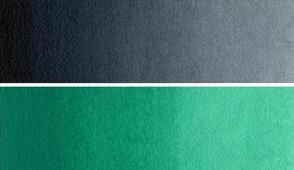
FSC® (Forest Stewardship Council® ) is an independent, non-governmental, not-for-profit organization established to promote the responsible management of the world's forests.
It is the leading catalyst and defining force for improved forest management and market transformation, shifting the global forest trend toward sustainable use, conservation, restoration, and respect for all. Search FSC® on our website to see our FSC®-certified (FSC-C111372) products.
Visit their website for more information: https://fsc.org.
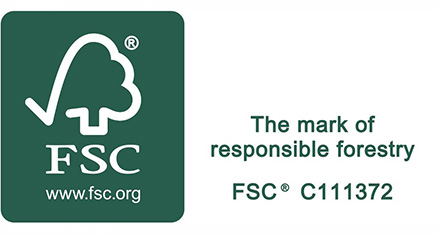
Pigments are the actual colouring substance of paint usually of mineral or organic origin. It is completely or nearly insoluble in water, when mixed with binders it becomes paint, ink or crayons etc.
A solvent is used to thin or dilute paint. For example, turpentine is a solvent used in oil painting for diluting paint & to create thin underpainting & washes.
Lightfastness is a property of a colourant such as dye or pigment that describes how resistant to fading it is when exposed to light. Below outlines the different lightfastness ratings.
Tips
Art masking fluid is a natural latex solution. In almost all cases, the thickening of the product is simply at the surface of the liquid where there is contact with air in the bottle. In almost all cases, a simple manipulation with a palette knife or a brush breaks this thin layer to reveal the fluid liquid beneath.
Should the coagulation or thickening be apparent throughout the entire bottle, which can happen with much older stock, please contact us via the contact us form.
To open the 250ml and 500ml Fluid Acrylic or many of our larger size paint tubes, cut along the top line as indicated in the image.
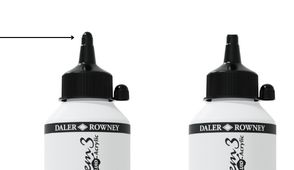
Paints can be revived with water or, in the case of oil, turpentine. If you are having trouble reviving one of our paints, please contact us.
We advise that you test a small area first before committing to the whole painting.
To view our range of mediums, click here.
Most artists wait around 4-6 months before applying varnish, however, start testing the surface of the painting with caution with a fingernail/thumb test after 7 days.
To attach the canvas wedges, please watch the following video: https://www.youtube.com/watch?v=BvC_tHXiPss
Extend Longevity: Select acid-free and archival-quality papers to ensure the longevity of the artwork.
Handling and Storing Artwork: Once the artwork is completed, avoid direct contact with fingers or other surfaces that may cause smudging or damage. Store the artwork in a clean, dry environment away from direct sunlight, heat, and humidity. Acid-free sleeves or portfolios are ideal for protecting the pieces from environmental factors, such as light, humidity, & pollutants, and handling.
Maintenance and Preservation: Regularly inspect the finished piece for signs of deterioration, such as fading, yellowing, or discolouration. Take proactive measures to address any issues and preserve the integrity of the pieces. Consider framing the artwork using archival-quality materials to further protect. UV-protective glass prevents fading caused by sunlight exposure.
Other
Please fill out the contact us form with as much information as possible to help us try to date the product. Attaching images via the URL field will also help greatly.
Please note: Old paintings with a Daler stamp on the back only indicate that they have used a Rowney mountboard, we will not be able to help with the artist or their subject.
We welcome all feedback and are always thrilled to work on new how-tos. To request a new how-to, please send us your request via the contact us form.
We previously had several QR codes on our packaging for our products, however, these links have now expired and we apologise for the inconvenience this may cause. Please take a look at our Discover section, YouTube channel, product or brand page to view more information on the purchased brands.
For Simply products, please visit our How-To's to find the SimplyCreate how-to guides.
Unfortunately due to the expiration of QR codes, the links do not now work, however, we have several videos by different artists on screen printing available to you:
Dave Fortune - https://www.daler-rowney.com/discover/techniques/screen-printing-step-by-step-guide-with-dave-fortune and https://www.daler-rowney.com/discover/techniques/screen-printing-tips-kit-and-guide-with-dave-fortune
Kerry Lemon - https://www.daler-rowney.com/discover/techniques/how-to-make-hand-made-screen-prints
VIN+OMI - https://www.daler-rowney.com/discover/techniques/how-to-make-professional-screen-prints
The Fine Art Trade Guild was formed in 1910 as the successor to the 1847 Printsellers’ Association, set up to oversee the fine art print trade. The Guild continues to set standards for prints, and our ArtSure scheme has brought those standards into the digital age. In addition, it sets standards and guidelines for picture framing, including the Four Levels of Framing and Quality Standards for Mountboard.
Daler-Rowney is one of the founding members. For more information on our mountboards, click here.
For more information, please visit: https://www.fineart.co.uk/
At Daler-Rowney, we do not test our products on animals.
Daler-Rowney does not use animal-derived ingredients in most colours and mediums it produces. The only exceptions to this are the pigment Bone Black (PBk9), Ox-Gall solution and Kandahar ink (Shellac).
Daler-Rowney does not use animal-derived ingredients in the manufacture of its paper and board ranges, with the exception of The Langton Prestige and Murano papers which use gelatine.
Daler-Rowney does not use animal-derived ingredients in the manufacture of its synthetic hair brushes and the only animal-derived ingredient in its natural hair brushes is the natural hair itself.
You are able to request samples on the mountboards, Murano, and Canford paper in the UK only.
Unfortunately, we do not send paint samples out, however, please do head to your nearest art store to take a look at the colours and products that we manufacture.
Please use the contact us form to request your mountboard, Murano, and Canford paper samples.
If you are using our products, as an artist, please use our store locator to find your nearest retailer.
If you live outside the UK, please visit our store locator. If your country does not have any stores listed, please fill out the contact us form and we will forward your email to your local FILA office.
A retailer or school - please fill out the contact us form to request a retail/education account.
Daler-Rowney does distribute other brands in the UK that are part of the FILA Group family, such as Giotto; Giotto be-bé; DAS; Lyra; Arches; Canson; Strathmore; Princeton; Maimeri; LUKAS; Scola; Creativity Backgrounds; and Creativity Inspired.
For more information, please contact us via our enquiry form or visit FILA's website.
We are sorry for the inconvenience this may have caused. Please be aware that our smaller canvases do not come with wedges. If you would like to request wedges, please fill out our contact us form.
Our logo/imagery may be requested in conjunction with adding our products to your store, your website or social media if there is a partnership only.
For further information or to request access to our assets, please contact us using the form with an explanation of the proposed use.
If you do use our logo without prior approval, we will request for our logo to be removed.
We love to collaborate with artists, however, we do consider sponsorships and collaborations on a case-by-case basis.
For more information or to enquire, please use the contact form.
Please add any social media profiles, portfolio websites and key information/statistics on the form. We thank you in advance for providing this information.
Please complete the Newsletter form here to update your newsletter preferences or to subscribe.
Further Questions?
Unable to find the answer to your question? Contact us here.
Why not visit our How To's, Tips & Advice section for advice & projects from artists? Click here to visit our Discover section.
